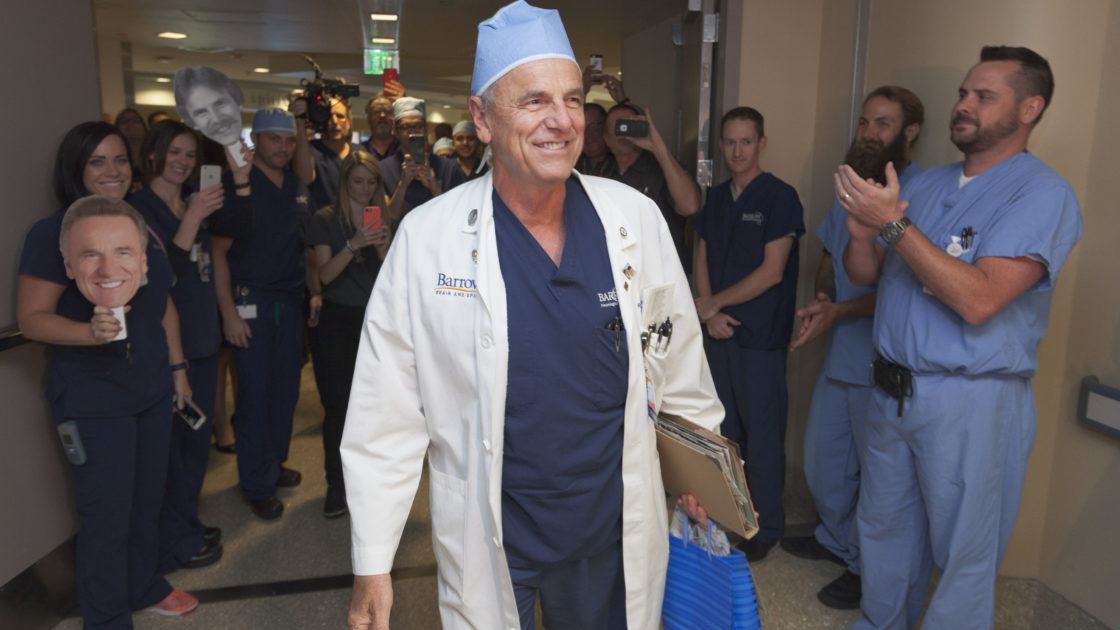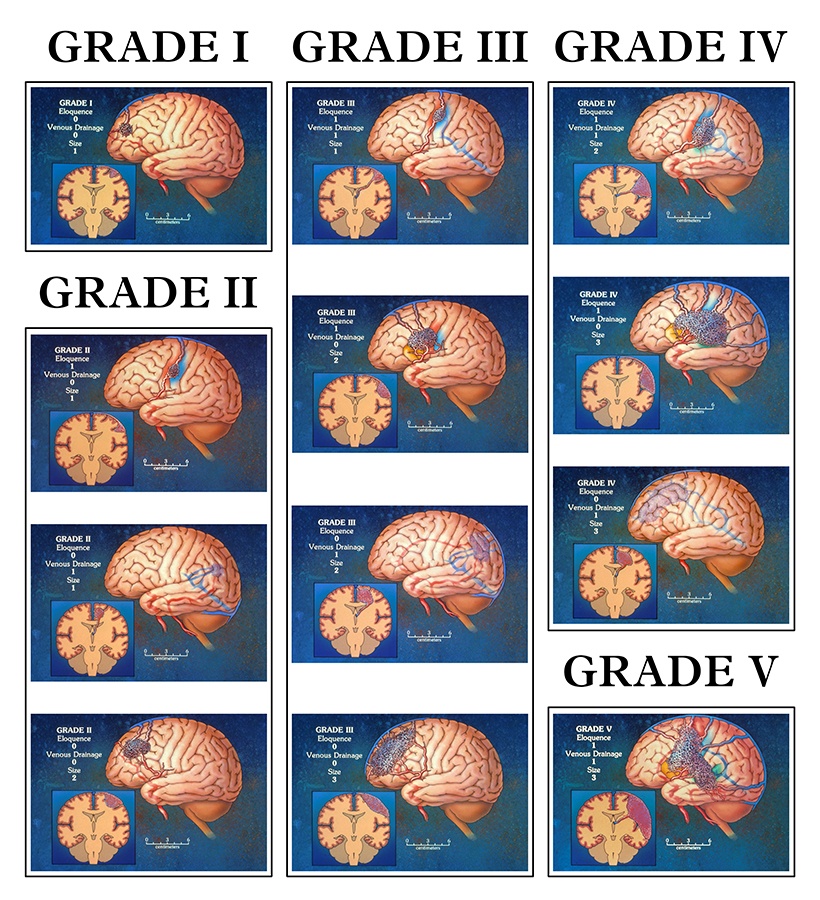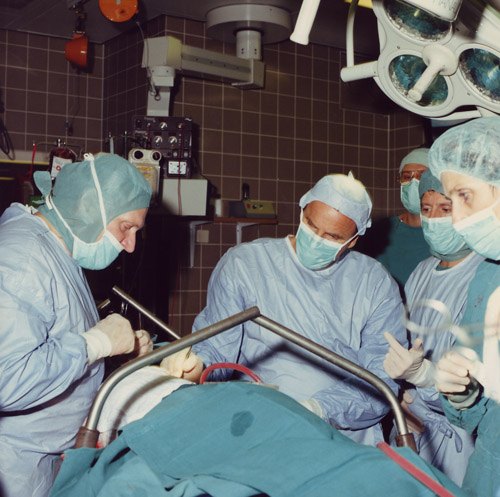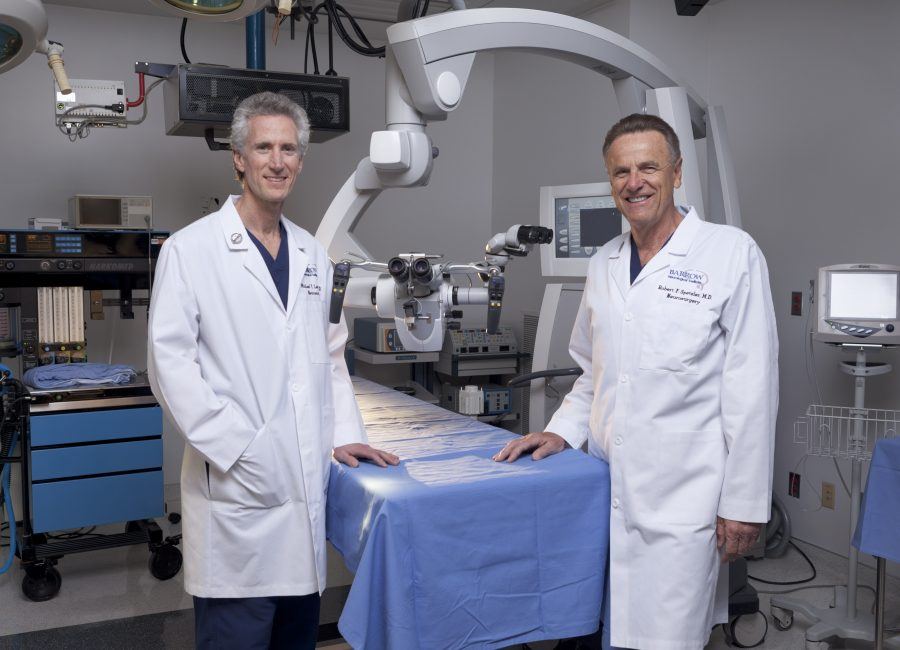
Dr. Robert F. Spetzler Makes Neurosurgery History as Two-Time CNS Honored Guest
The Congress of Neurological Surgeons has named Robert F. Spetzler, MD, the Honored Guest for its 2022 meeting. He is the only two-time recipient of this recognition, which is considered the most prestigious in neurosurgery.
Dr. Spetzler also made history in 1994, at age 49, when he became the youngest neurosurgeon ever selected as the CNS Honored Guest. Barrow is the only institution to have received three CNS Honored Guest designations, with Volker K.H. Sonntag, MD, earning the award in 2002.
Dr. Spetzler—the Emeritus President and CEO and Emeritus Chair of Neurosurgery at Barrow Neurological Institute—accepted this year’s award with mixed feelings.
When I think about his influence on my career and all the patients that I treat, and then multiply that by the hundreds of neurosurgeons he has mentored or touched in some way, his impact becomes worldwide and immeasurable.
Michael T. Lawton, MD, Barrow President and CEO
“I was a little hesitant, simply because there are so many individuals among our neurosurgery colleagues who really deserve this honor who haven’t yet received it,” he said, “but I will certainly enjoy the meeting and acknowledge with gratitude what they have bestowed on me.”
Dr. Spetzler will speak about two of his favorite topics during the scientific sessions of the meetings: cavernous malformations and vascular lesions of the spinal cord. He also will share a personal reflection of his neurosurgical career at a luncheon seminar for residents and fellows.
A Legacy in Vascular Neurosurgery
Dr. Spetzler is internationally renowned for his pioneering contributions to vascular neurosurgery.
Today’s neurosurgeons still reference the grading system he co-developed in the 1980s for brain arteriovenous malformations (AVMs). These abnormal tangles of blood vessels can form in any part of the brain. They can also vary greatly in their size, complexity, and depth within the brain.

Dr. Spetzler recognized the need for a simple, broadly applicable grading system that could help neurosurgeons estimate the risk of surgically removing different AVMs. He sat down with his neurovascular fellow at the time, Neil Martin, MD, to establish a five-tier classification system for these lesions. It became known as the Spetzler-Martin scale.
Dr. Spetzler and then-neurosurgery resident Francisco Ponce, MD, now an attending neurosurgeon at Barrow, later condensed the scale to three tiers. Michael T. Lawton, MD, who trained under Dr. Spetzler and succeeded him as President and CEO of Barrow, developed a supplementary grading system with California-based neurosurgeon William Young, MD, to account for additional risk factors.
Among the most publicized milestones in Dr. Spetzler’s career is his role in refining cardiac standstill to treat previously inoperable giant aneurysms of the skull base. This procedure involves cooling the body to 15 degrees centigrade, eliminating blood flow, and stopping the heart. The low temperature protects the brain and other organs from damage while the neurosurgeon quickly applies a clip to the neck of the balloon-like bulge in the blood vessel. This removes the risk of a devastating bleed during surgery.
“That has allowed us to treat patients who otherwise had absolutely no other option,” Dr. Spetzler said.
He performed more than 6,000 aneurysm surgeries during his career, treating some of the most complex cases in the world, and just over 100 of those patients underwent cardiac standstill.

“You can see how rarely it is indicated,” he explained. “But when it is indicated, it gives the patient—who is facing almost certain death or debilitation—a chance of making a good survival.”
Today, neurosurgeons recommend cardiac standstill even less frequently, due to the rise of endovascular neurosurgery. However, the procedure is still performed on occasion.
The unique challenges of vascular neurosurgery have captivated Dr. Spetzler since he began his medical education at Northwestern University. He traveled to Switzerland as a medical student and visited Gazi Yaşargil, MD, a trailblazer in the development of microsurgical techniques for cerebrovascular neurosurgery.
Dr. Spetzler’s residency training at the University of California at San Francisco deepened his interest in the neurovascular subspecialty, and in academic neurosurgery.
His interest in neurosurgery and medicine overall, though, go back much further.
Choosing Medicine
“In the yearbook, where you put your future goal, mine was neurosurgery,” he remembered. “I knew I wanted to be a neurosurgeon very early.”
While Dr. Spetzler can’t pinpoint a single moment that attracted him to the field, he can recall the experience that shaped his desire to explore a medical career.

Dr. Spetzler was 5 years old when he contracted tetanus from a rusty nail. At the time, the bacterial infection was usually fatal. His parents rushed him to the university hospital near their home in Germany after he accidentally broke his mother’s favorite vase during a tetany attack.
“I remember the car ride in the middle of the night,” he said. “My dad was telling me one story after another, while I sat in my mom’s lap, to keep me awake because when I drifted off I would have these attacks.”
His medical team put their hopes in a new drug: penicillin. Being one of the first people to receive this life-saving treatment inspired the young Dr. Spetzler to pursue medicine. However, it was the lack of sensitivity from one of his physicians that stuck with him as he went on to care for his own patients. So wrapped up in the teaching opportunity of the 5-year-old boy’s case, the physician had failed to treat Dr. Spetzler with dignity.
“I hope that made me a little more sensitive toward my patients in a day that only had 24 hours in it and made me a better physician,” he said.
Paying It Forward
Dr. Spetzler began his career as an academic neurosurgeon at Case Western Reserve University in Cleveland. He joined Barrow in 1983 as the first J.N. Harber Chair of Neurosurgery, thanks to recruitment efforts by the Institute’s founding neurosurgeon, John Green, MD. Dr. Spetzler saw an opportunity to grow the Institute’s residency program, which didn’t boast a strong ranking at the time but showed potential.
A few years later, when Dr. Green retired, Dr. Spetzler assumed the role of President and CEO of Barrow. Under Dr. Spetzler’s leadership, the Institute grew from a regional center to a global destination for the treatment, education, and research of neurological conditions.

“Dr. Spetzler defined technical excellence in his time,” Dr. Lawton said. “I am lucky to be among those who witnessed his virtuosity firsthand, was inspired by him, and strives daily to propagate his legacy of technical excellence today.
“When I think about his influence on my career and all the patients that I treat, and then multiply that by the hundreds of neurosurgeons he has mentored or touched in some way, his impact becomes worldwide and immeasurable. He is the rarest of neurosurgical talent, in the same rank as Cushing and Yasargil and Drake, and neurosurgery is different today because of this one surgical master.”
Dr. Spetzler holds numerous distinctions in addition to those from the Congress of Neurological Surgeons. His undergraduate alma mater, Knox College, awarded him an honorary doctoral degree in 1994. Additionally, the American Association of Neurological Surgeons (AANS) granted Dr. Spetzler its highest honor, the Cushing Medal, in 2017.
But his proudest accomplishment in neurosurgery isn’t any of those accolades.
“It’s more than 200 of my professional offspring,” he said. “I’m incredibly proud of the quality of the young men and women that we have graduated from Barrow, who are in virtually every academic medical center and taking care of patients in the best way possible.”


